Danio rerio: description and content of fish
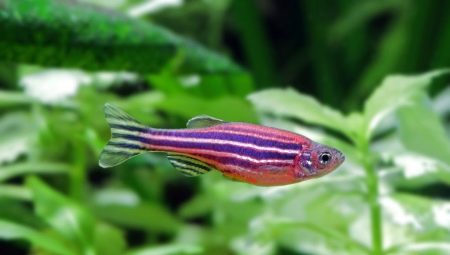
Aquarium fish are a great way not only to satisfy the need for a living being at home, but also to decorate the interior. There are a lot of fish species; zebrafish are very popular. This breed is distinguished by its activity and mobility. Its size is small, and its color is unusual. These fish have been bred for a very long time, and their demand is not declining. This option is suitable for those who are just starting to breed fish and are taking their first steps in this direction. Keeping this breed does not require serious effort.
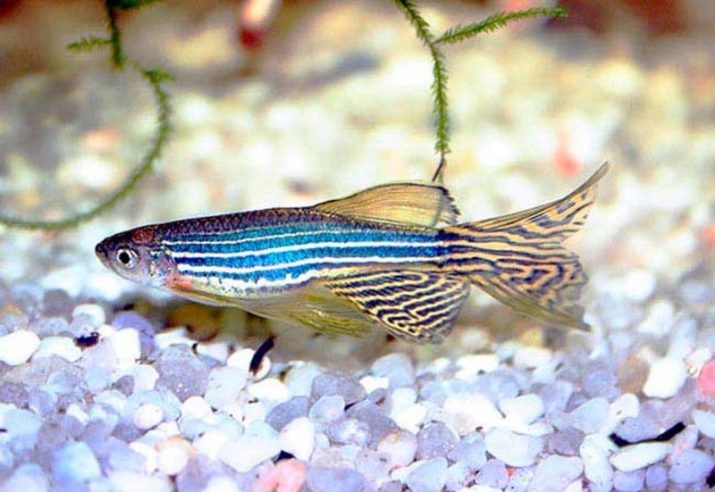
Peculiarities
Homeland of aquarium fish zebrafish - Asian waters near Hindustan. They belong to the carp family. In natural nature, they live in different bodies of water: rivers, streams with a slight current. This fish is small, only about 5 cm in size. Compact size, beautiful color and vigor, unpretentiousness attract the attention of aquarium lovers. This schooling fish, in nature and in captivity, exists in groups. Single content doesn't suit her. Lives from 3 to 5 years.
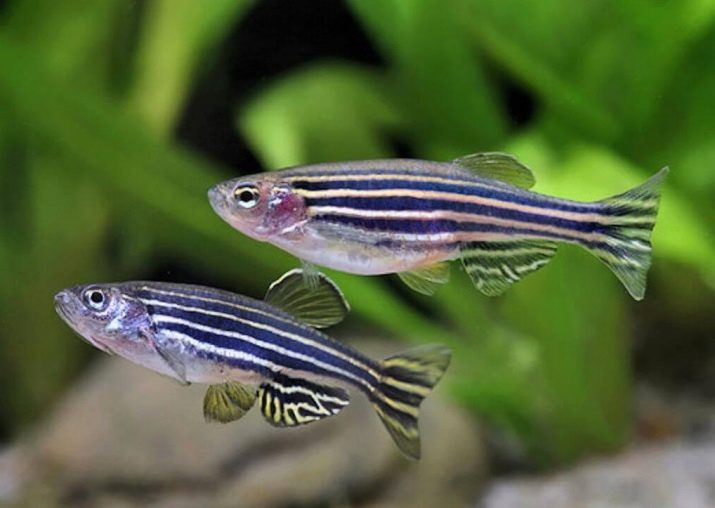
The specimens that can be purchased in pet markets are bred in captivity, therefore they are perfectly adapted to life and reproduction in an aquarium.
The nature of this fish breed is frisky, positive, cheerful. They will decorate any water landscape at home. Beautiful appearance has the following features:
- the main background of the color is most often light, yellowish;
- blue stripes are located along the entire body;
- elongated body;
- the ornament adorns the fins and tail.
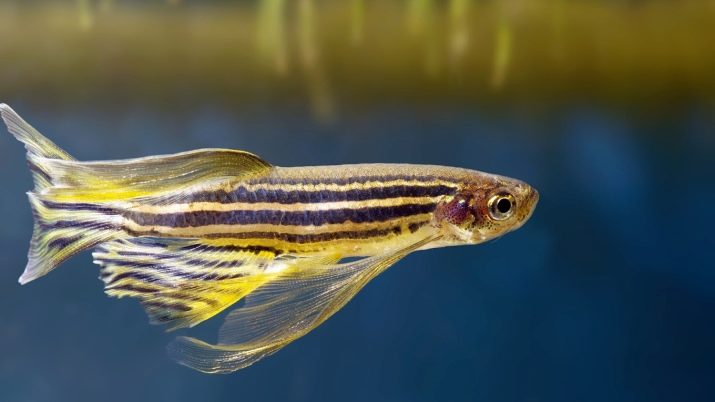
Breeding forms
Breeding work allows amateurs and professionals to regularly get more and more new varieties, breeds and hybrids. You can find fish with a leopard color, with an enlarged tail and fins.
- Leopard fish have a 5 cm elongated body with 2 mustaches. The color ranges from pale yellow to rich golden. Against this background, noticeable specks of dark color. The tail and fins of the leopard zebrafish are striped. The male is somewhat brighter than the female.
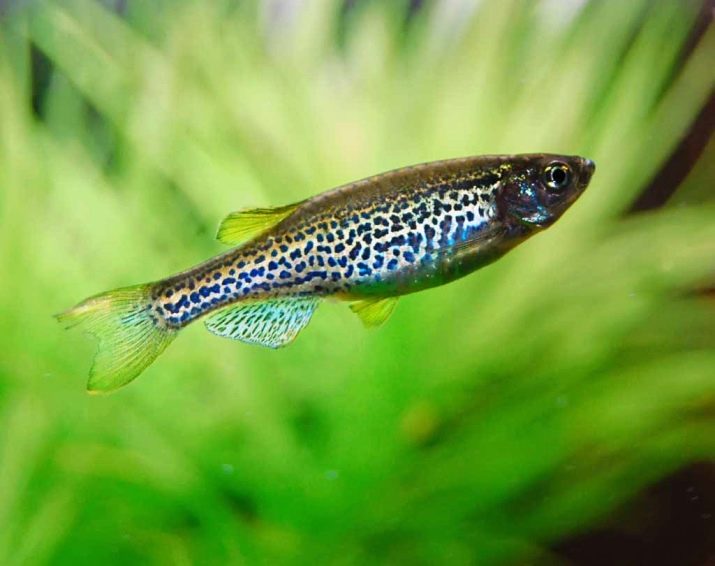
- Another variety is Bengal danios, which are larger in size. Their dorsal fins are very long. The fish also have a completely different color: the background is light green with mother-of-pearl. Yellowish and blue stripes are located on the back and tail.
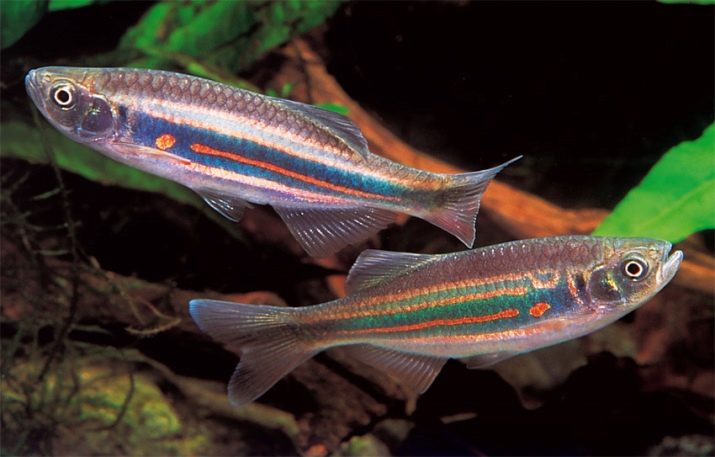
- Danio tinvini have an even more original color. This is one of the most catchy and spectacular varieties: the background is blue with silver, and on the body and fins there are rings of gold color.
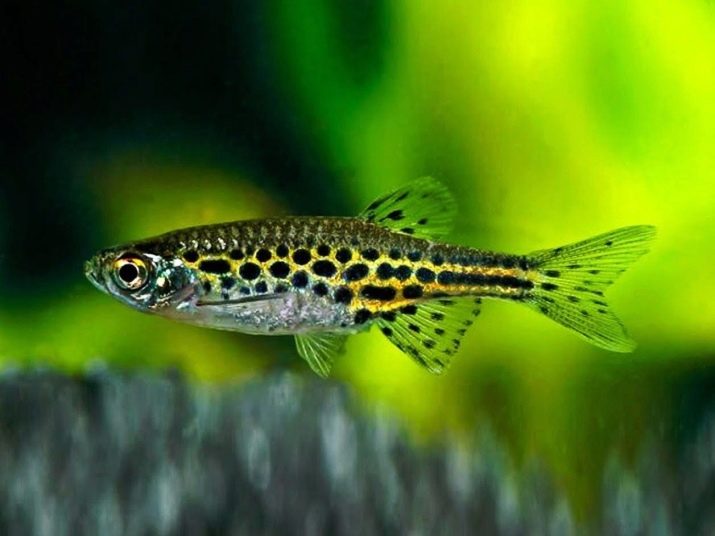
- Small colored fish micro-collection Galaxy are also very expressive and noticeable. They have peculiarities: the main color of the back is bluish, on the sides and on the back there are rich yellow spots. The tail, belly and fins are decorated with orange stripes.

- Veil zebrafish It has spectacular large fins and a beautiful transparent tail. The color scheme is different, the most expressive is considered to be veiled pink danios.
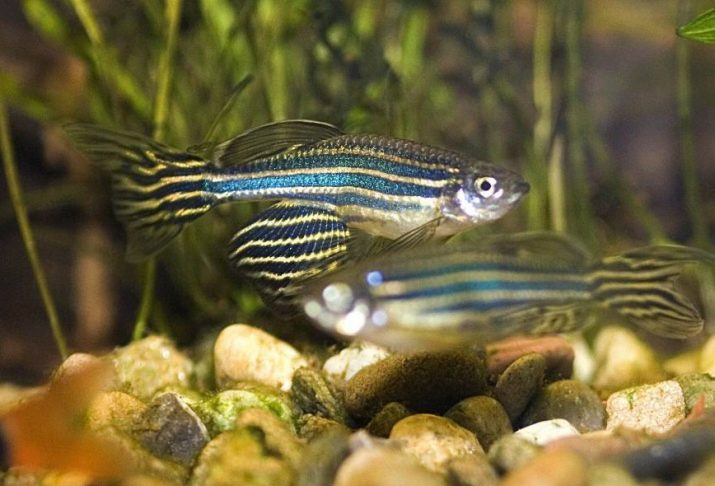
Compatibility
Before starting a zebrafish, you should study their ability to coexist with other fish. This species gets along well with all non-aggressive breeds, calmly reacting to the neighborhood. However, not all fish are suitable, as the requirements for water parameters and keeping conditions may vary.
In addition, there is a restriction on the settlement of these fish to larger schools, otherwise they will simply be eaten.
Danio rerio can be added to many types of fish.
- Guppy. An almost ideal neighborhood, since the conditions for keeping these fish are similar. Both are peaceful and look organic on the outside.
- Cockerels. Another calm variety that is not aggressive towards neighbors. You should not add veiled danios to the cockerels, otherwise they may be pinched. But the classic version is well suited for a tandem, both in character and in appearance.
- Neons. Suitable for sharing: they have the same water requirements. There are no restrictions in combination.
- Scalars... This neighborhood will be successful if the fish grow together. Small fish are not hooked up to scalars, they can eat zebrafish.
- Lyaliusa. This is a harmonious combination of 2 calm, peaceful fish species.
- Speckled catfish... They live at the bottom, calmly endure any neighborhood due to their peaceful nature. In addition, zebrafish flocks float above and practically do not intersect with them.
- Catfish ancistrus. The extremely phlegmatic nature of these fish allows almost any non-aggressive neighborhood.
- Mollies... A very common type of fish with a peaceful disposition. The keeping parameters of these fish and zebrafish are identical.
- Swordsmen... Despite their larger size, these fish are very calm about their neighbors. The main thing is that everyone has enough space.
- Shrimps, snails. Absolutely safe neighborhood. Any, even the smallest, shrimps are in excellent contact with zebrafish.
- Pecilia. Good compatibility as this fish is very calm if not disturbed.
- Cardinals... Similar in temperament, they belong to the gregarious. It gets along well with zebrafish.
- Wedge-shaped races... Another gregarious species with a peaceful disposition. In addition, this species swims below, the upper neighbors do not disturb it.

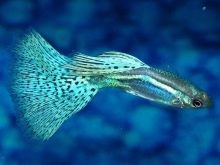

However, there are types of fish with which the neighborhood is impossible.
- Barbus - very aggressive fish. In addition, the water parameters for her are excellent.
- Thornsia. Likes to attack (and does it with pleasure) on everyone who comes across. The biggest irritant is the veil tail or fin.
- Macropod. A very fast fish, when moving, it pushes neighbors and can kill by pushing it against the wall.
- Cichlid - a large fish that eats everyone who is smaller.
- Gold fish. This is a mutually risky neighborhood, since large individuals can eat zebrafish, and a flock of the latter can injure goldfish when moving quickly.
- Cold water. The problem is different content requirements.
- Teteradons - aggressive fish. They love to attack and eat prey.
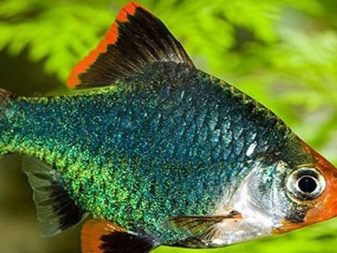
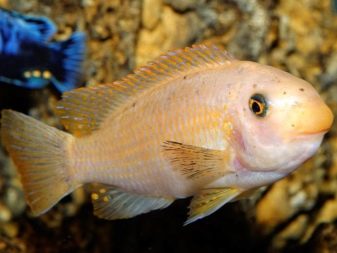
In addition to choosing the right neighborhood for zebrafish, it is necessary to take into account other features of the content that can provoke aggression even in calm species:
- lack of space, crowding;
- lack of the proper number of representatives in the flock.
These problems are solvable. In the first situation, you need to choose a larger aquarium. For 6 individuals, about 30 liters are needed. In the second situation, they simply increase the number of zebrafish. The minimum number of a school is 6 pieces, if there are fewer of them, then the mental state of the fish may be disturbed.

The peculiarities of the neighborhood should also be taken into account. For example, one guppy needs 2.5 liters of water, and a pair of mollies - 50 liters.
Growing conditions
This type of fish will not cause difficulties even for inexperienced aquarists. Danio are unpretentious, non-aggressive, and therefore do not cause problems. It is necessary to populate zebrafish in flocks, in which there should be 1 male each. Make sure you have enough tank volume and water. It is better if the capacity is high, since this type of fish loves to swim near the surface and does it very actively.
Water temperature is an important condition for keeping zebrafish. It should be without drops. The maximum range of temperature fluctuations is from 17 to 25 ° С. Every day, the water is changed by at least ⅓. Otherwise, the water will quickly become polluted, and this will negatively affect the health of the zebrafish. Dirty water can kill fish.
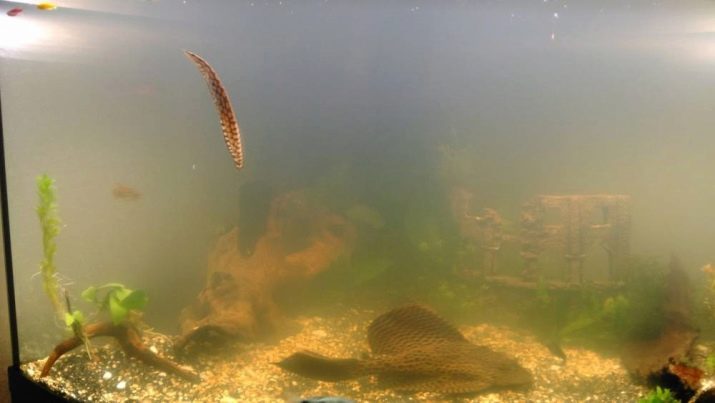
What and how to feed?
Dry types of food are suitable for feeding zebrafish, but it is necessary to periodically include supplements in the diet, since variety has a positive effect on appetite and development. You can include in the diet:
- frozen larvae;
- pipe makers;
- greens;
- bloodworms, previously chopped;
- daphnia in a powdery state.
When choosing food, buy one which does not descend from the surface of the water, since the zebrafish does not dive deeply for food.
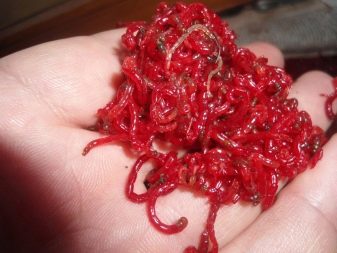
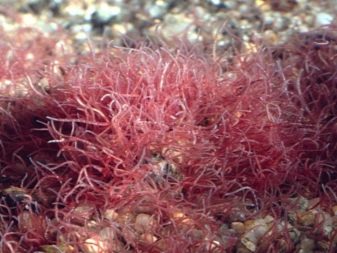
This fish will be rather reluctant to feed from the bottom. Feeding regimen - 2-3 times a day. Do not overfeed your fish, as they eat little and the remaining food will pollute the water.
The fry need a live-type starter food, although analogs can be dispensed with. Boiled yolk is great for starting.
Sex differences and reproduction
The sexual characteristics of the zebrafish are poorly expressed, therefore, it is difficult to distinguish the male from the female, there are many similarities in them. There are several distinguishing features to consider.
- Dimensions. Females are denser in the belly area, somewhat larger than males. The latter are lean, arrow-shaped, shorter than females by 0.5 cm. This feature is only significant when evaluating adults. Youngsters are visually indistinguishable for a layman.
- Colors. More precisely, its brightness. Males have more catchy colors, their stripes are more juicy. The color of females is monotonous and restrained, since they have to hide during spawning.
- Behavior... The character of males is more dynamic, they are more mobile, faster. Females are slower and calmer.
- Anal fin. This is an additional method for determining gender. Females have a rounder anal fin, while males have a smaller and pointed type. However, this difference is very arbitrary, since it is not always pronounced.

Breeding zebrafish is not difficult, since spawning, even in an aquarium, is quite active. The main thing is to observe the basic rules of keeping conditions: to maintain the optimum temperature in the region of 20-23 ° С, to feed well, to change the water often.
During one spawning period, females are able to bring from 5 eggs to several hundred.
Before spawning, it is necessary to separate the fish by sex, feed them with bloodworms. At the bottom of the spawning box (it can be an ordinary glass jar with a convex bottom), a lamb, moss is laid out. They are pressed down by stones. Water is poured to a level of up to 10 cm, which is infused for about a week. After that, in the evening, a female and 2 males are planted in the spawning grounds. Usually, spawning begins in the morning. The fish can be left for another day if spawning has not occurred.
After the eggs emerge, the fish are removed from the spawning grounds. After a few days, the larvae will hatch, and they need to be fed with ciliates. After another 3 days, the larvae are placed in an overall container, where they are fed with cyclops until they are transformed into fry.
For information on how to keep and breed zebrafish, see below.








